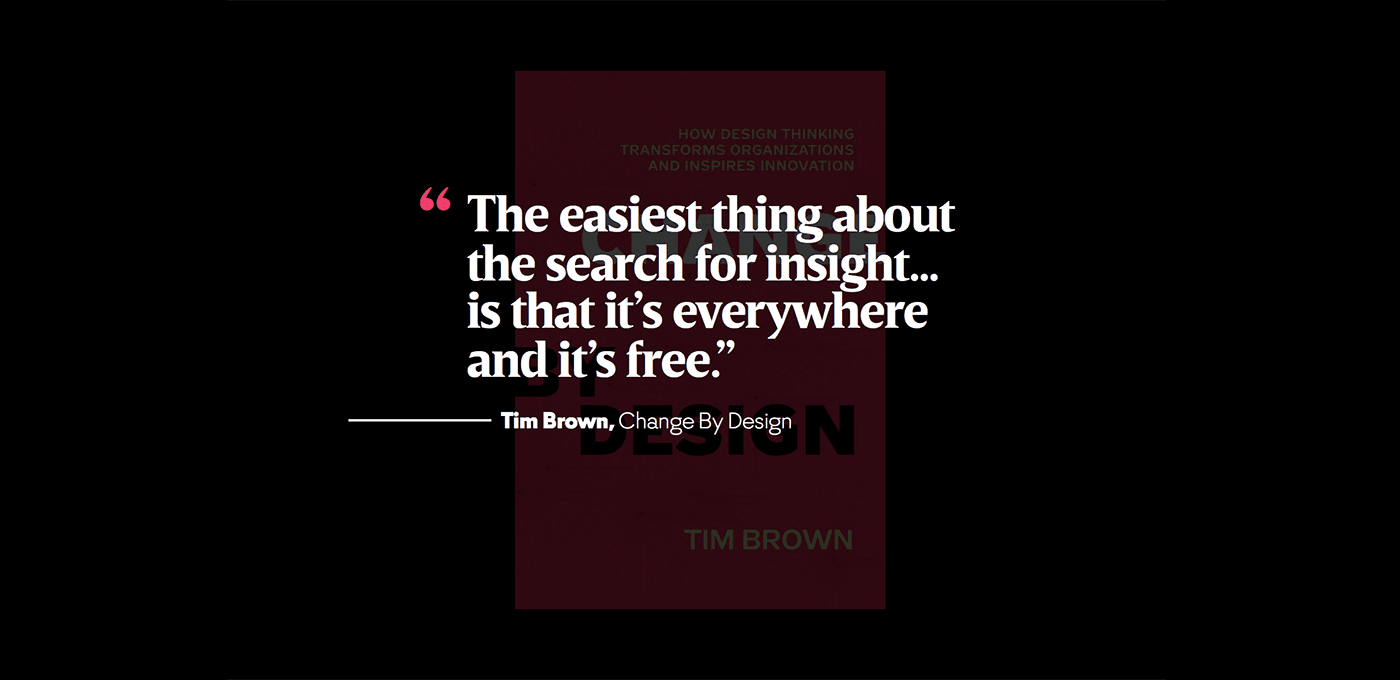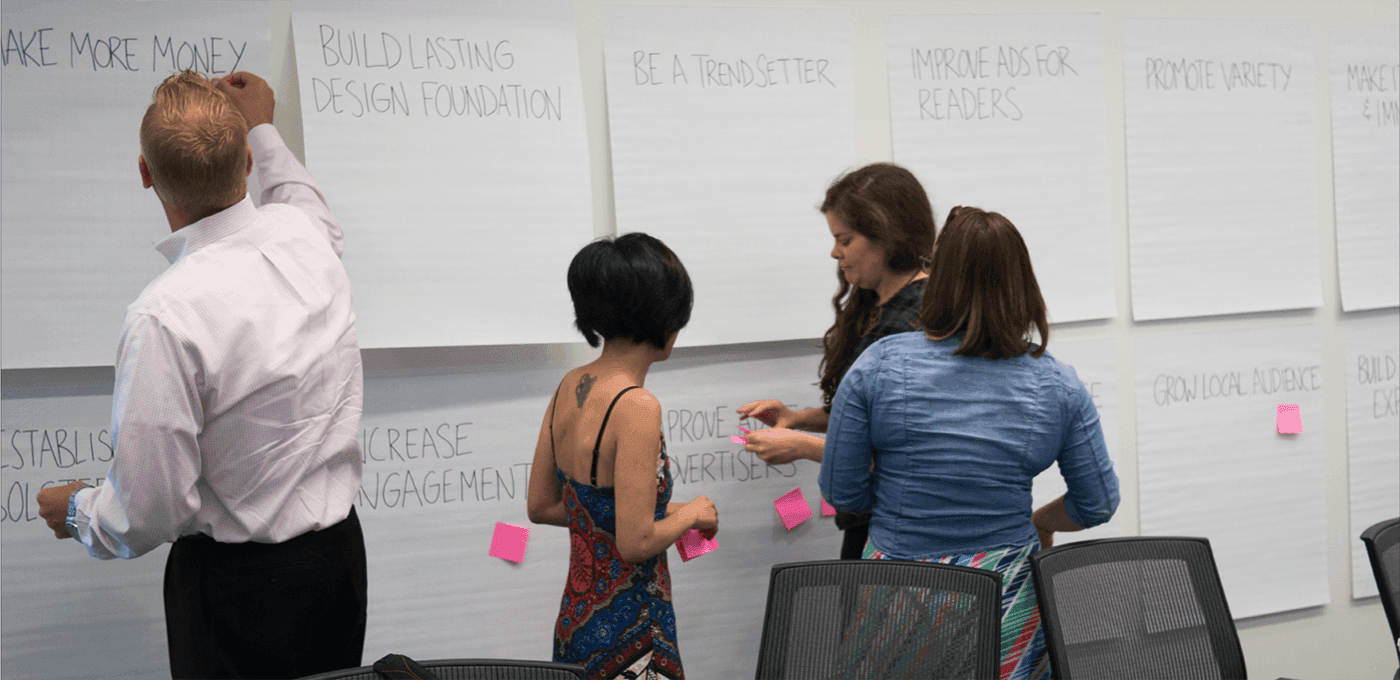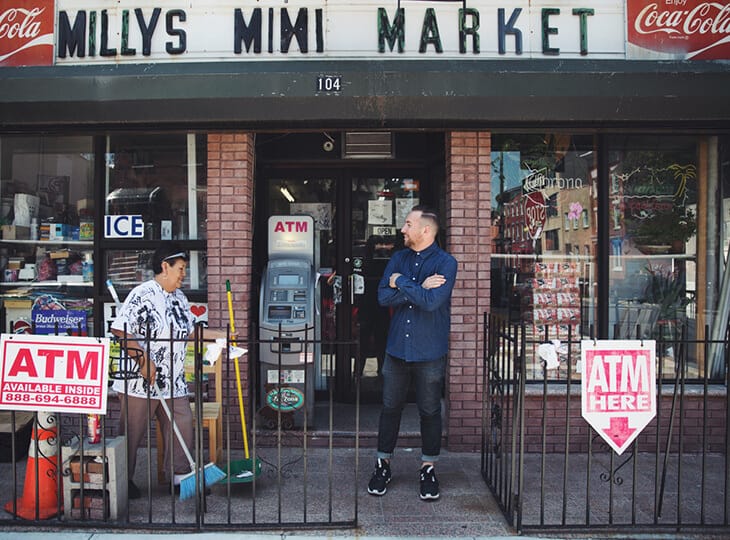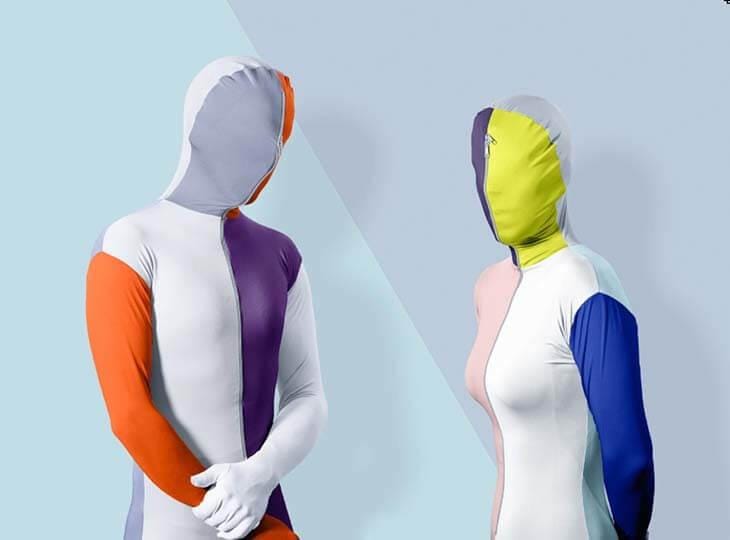Dan runs web design collective SuperFriendly with a unique outlook on client and project management.

In June I had the privelage of bringing Dan to San Diego for Metajive's annual "proccess of progress" event with AIGA. We look for someone who has angable takeaways to share, its not about showing and telling your beautiful work (which Dan definitaly has) but about how you got there and what people can apply to make their own work better. Dan knocked it out of the park walking us all through a project from start to finish. After the presentaiton we dove deeper for @99u.
-----
Everything from Dan Mall’s demeanor to the name of his company, SuperFriendly, makes one thing clear: He is here to help.
Before heading out on his own to found his Philadelphia-based design agency, Mall was the design director at Big Spaceship, interactive director at Happy Cog, and technical editor at A List Apart. Today he works with high-profile clients such as Google, Apple, and the New York Times.
You were the design director for well-regarded digital agencies like Big Spaceship and Happy Cog before you left to start your own company. How was it transitioning from traditional agency life to setting up on your own?
I didn’t leave Big Spaceship because I was unhappy there. In fact, it was probably one of the best places I have ever worked. I left there to move back to Philly to be closer to my parents and in-laws once we had kids. I knew a bunch of agencies here in Philly and there was no place I wanted to work. I also wanted to be home with my wife and my baby and realized that running my own business would allow that best. I knew this was coming so during the last year of working at Big Spaceship I actually worked two jobs: the agency during the day and then after dinner at night I would start my own work. I wanted to make sure I could make it work on my own.
SuperFriendly is differentiated by having no set staff but “super friends.” How do you approach finding the right crew for each job?
As far as creating a team, I realized you often don’t have the right person on staff for a particular project — whether that be an illustrator with a certain style or a 3D animator who has worked on movie stuff before. My thought was that I could just pull those people in temporarily while working on a project then they wouldn’t have to be committed to me and my agency full time. We could work on a great thing together and then all go our separate ways. That is how I set up SuperFriendly and that’s how it’s run ever since. Each team is made up of the right freelancers for the job.
How many of these people have you gone out and searched for, and how many are from your existing network?
I sell “good work” to clients so I almost always go with people I know and know their work. I can’t stand behind the unknown of people I haven’t worked with. I’ve spent years having lunches with people and getting to know them, and creating lists of people who I would really want to work with, so when the time comes, I know exactly who to call. I almost always work with people I know personally and am constantly trying to expand that pool, getting to know people whose work I admire.
I’ve spent years having lunches with people and getting to know them … so when the time comes, I know exactly who to call.
When you work with clients, how do you get past a bad brief?
People don’t buy products: they buy outcomes. Selling websites is no exception. The client wants to know what the site will do for them and how it will help them sell more product. Try to have conversations about that at the very start. And, to take a page out of journalism, you have to control the story. If your client writes a bad brief, then write a better one. That’s one of the first things I do in a project. I write a brief regardless of whether a client wrote one and say, “Here’s the brief for the project that we think is going to accomplish the goals that you want, and here’s the project that we want to do.” Then I get them to ratify that. If we are agreed at that point, then we can keep moving forward.
IF YOUR CLIENT WRITES A BAD BRIEF, THEN WRITE A BETTER ONE.
You can also use that brief to look back once you are working on the weeds of a project so you don’t get lost in the forest. I also always write a list of metrics, or OKR’s (Objectives and Key Results). That makes the grading scale built in. You can look at them and measure over a quarter and see how well you did. It’s certainly dependent on the collaboration of vendor and client to go through that stuff together, but it gives you ways to know what you’re designing as well as ways to measure whether what you design is the right thing.
How often do you meet with clients at the start, and how many people do you choose to get to know from the client end?

One of the first steps in a project is just talk to people, whether that’s people who use the product, stakeholders, or people who are working on it day to day and try to understand what is important to all those different groups. I think a good product sits in the middle of all those groups — good for users, good for the business, good for all the parties involved. The goal of a good designer is to strike the right balance. Then we will do a prioritization exercise to work out the highest priorities. Running a project that has 18 priorities is really difficult, while one with two priorities is significantly easier! Sometimes making the brand more established is a priority over making money and vice versa. Once we have the top three priorities, we start to write our OKRs.

The Objective aspect should be vague and ambitious; the Key Result that is paired with an objective should be measurable and have a number associated with it. An example of an Objective would be to “Improve user experience on a site.” How do we know we’ve done that? We write the Key Result, which may be reducing load time on the site by 20 percent. The recommended time for an OKR is a quarter, so you can measure whether you are getting there in your three-month period. You might even map three or four key results to a particular objective. Track where you are headed and where you are going and it gives you a framework to be really actionable about your design.
It’s common for designers to work towards goal, but it’s rare for them to work within OKRs. Have you had any issues working with your designers in this framework?
I try to have my team come up with the OKRs. I find it’s a lot easier to get designers, developers and engineers on board with those goals if they’ve been involved in creating them. Once we have the key results, the designers really know what they are working on. A key result might be “increase search results accuracy by 10 percent.” That is a very actionable thing to design. If you say, “Let’s make the site better,” they might not think to work on search. Having really specific things to work on empowers designers more than it makes them feel constrained.
Once you’ve reached this point, how do you overcome the blank page?
The blank page is still terrifying for me! One of the ways I get around that is to try to design something really quickly. Sometimes I just put stickers on the page of my sketchbook to feel like I’ve started something. The other thing I do a lot is steal. I will often lift sites directly and then start moving things around, like switching the columns, or changing the typeface etc. If you do enough of that stuff, you can’t recognize the original.
THE OTHER THING I DO A LOT IS STEAL.
When I design a comp it kills me to start with the header if I don’t have a good idea for the header. But I might have a great idea for sidebar or button instead, so I start with whatever idea I can’t wait to get out of my head. I call that an “element collage.” I leave the ones I don’t have the ideas for until later and start working from there. I get into a browser very quickly too. There are certain things that work really well in tools like Sketch, Photoshop or Illustrator, and others that work really well in HTML or CSS. I try to spend the least amount of time in every tool that I can. Use the tools that give you the highest amount of impact in the shortest amount of time.
Do you have a system or process you use to walk the client through your initial presentation?
I’m a big fan of frameworks over process. When I think of a process, I think of things that happen the same way every time. It is consistent. I don’t like working that way as it is boring and the variables change too much. By contrast, a framework is more like a soccer field. You know where the constraints are, but every game is different because of the variables. I have a framework for presenting, but the order changes from situation to situation. Instead of the “real estate tour” (pointing out where everything is), you do the goals tour. So you might explain that you put the search bar at the top because our analytics showed us that is the thing people use the most. You talk about why you did things rather than what you did. I also believe it’s important to make the subjective things objective. If you say you used blue because you really like blue, well that’s subjective and you open yourself up to the client combatting that. But if you say you you tested the different shades of blue to see which had better conversion and picked the best one, the client would have to combat your fact, which is harder to do. Root everything you use in facts.

Another point I learned from an art director at Big Spaceship is to compliment your own designs. So he’d say something like, “ We used these columns here, and they are working really well”… It either helps to rally people or it leads to a good discussion on a particular point.
The final thing I do is try to frame the feedback that I want. Before starting the presentation, I set expectations on the feedback I need (or even lay out the feedback I am not looking for) — whether that be on colors, typography, or any aspect of the design — as it helps the listener work out what to pay attention to. There is a lot of sensory overload with the first presentation and it also helps avoid feedback on things you don’t want to have feedback on. So rather than a “What do you think?”, focus the feedback before you begin.
You talk about selling “good work” to your clients. How do you make that a reality?
Now that big companies such as Apple, AirBnB, Google and Microsoft are talking about design being important, it’s really taken a seat at the table. I find that a lot of designers are still focused solely on the craft of what they do and that doesn’t always lead to good design. Just because you are good at pushing pixels around, doesn’t mean an idea has traction and that people will rally behind it or that it will test well — all the things that ultimately make design good for real people. I think designers could do a better job thinking about the things around their craft, and looking outside of just the execution of their work. My favorite definition of design is by Jerod Spool, when he says, “Design in the rendering of intent.”
How do you communicate this issue with designers who are in the mindset of “I just want to make this look better?”

I have a lot of conversations with designers on this topic. Some want to improve their presentation skills, while others might want to improve how something looks, and I sometimes think they are focused on the wrong stage of design. If you’re worried about how a client is going to react to something, you likely could have addressed that issue at an earlier stage. It’s better to have those conversations earlier so that you and the client know that something is right rather than having to convince the client that it is. Good design starts very early in a process. In an agency, a lot of design issues can be solved in the sales process even. If your client trusts you there, if you write a good agreement…all that leads to good design work being achieved. If you don’t do those things well, it is actually really difficult to move design through the organization.
So essentially, you’re talking about “setting the table for good design?”
Exactly. When I first get an email from a client, I attempt to put up as many road blocks as possible. Not to be a jerk, but to find out how much I really want to work with them and how much they really want to work with me. If we are both prepared to jump all the hurdles, then we are a good fit, and ultimately it’s the fit I am looking for. I like to know a client is willing to match the effort I am going to put in. This is what I see as setting the table for a good design process. There are a lot of signs in the first two or three conversations that a project is not going to go well. A lot of agencies and designers brush that stuff off and then complain about it later on. But if you can demonstrate to your client your expertise and show that you can work on the problem they are trying to tackle and really add value there early on, I feel like the pixels will take care of themselves. A lot of agencies end up having the sales process conversation too late. They want to figure that stuff out later, but then realize further down the line that they are in the middle of the wrong project. They realize they didn’t want to “make the yogurt site more beautiful” for example, but that they wanted to “work out how to sell more yogurt.”

